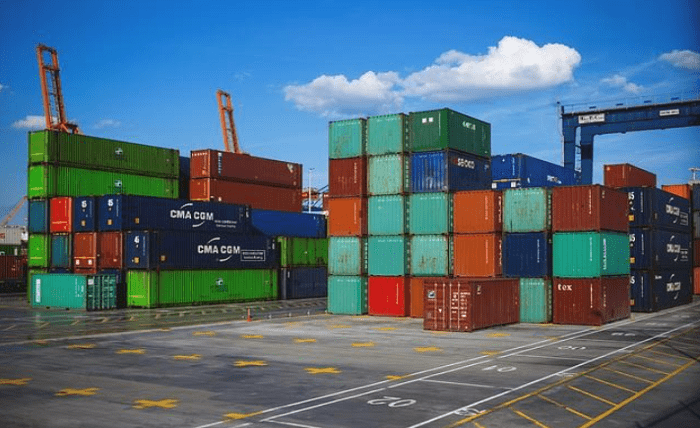Drayage services hold a pivotal role within the logistics and transportation industry, acting as the vital link between various modes of transportation, including ships, trains, and trucks. If you are contemplating the establishment of a company providing drayage services, you are stepping into a dynamic and swiftly evolving sector. To assist you in effectively addressing challenges and constructing a thriving drayage business, presented below are nine indispensable recommendations.
1. Engage in Thorough Market Research Before Initiating Your Drayage Enterprise:
Undertake meticulous market research. Gain insights into the demand for drayage services in your target region, identify potential competitors, and analyze prevailing market trends. Scrutinize customer preferences, emerging technologies, and economic indicators to obtain a comprehensive view. A profound understanding of the market will empower you to make well-informed decisions, develop a nuanced business strategy, and strategically position your company for sustained success in the competitive landscape.
2. Maximizing Efficiency through Intermodal Synergy
In the dynamic realm of drayage, intermodal trucking, and container shipping services, understanding the intricacies of logistics is paramount. Efficient operations not only involve the seamless coordination of these components but also demand a keen awareness of potential challenges.
In this interconnected logistics landscape understanding concepts like what is demurrage – also hold paramount importance. Demurrage refers to the fees incurred when containers exceed their allotted time for loading or unloading at a terminal. By incorporating a comprehensive demurrage management strategy, your company can mitigate additional costs, enhance turnaround times, and ultimately solidify its reputation for reliability in the competitive logistics landscape.
3. Embrace Technological Advancements:
Integrate cutting-edge technology into your operations to systematically streamline processes and enhance customer service. Leverage state-of-the-art transportation management systems (TMS), real-time tracking solutions, and a suite of digital tools to meticulously optimize routes, closely monitor shipments, and provide clients with accurate and timely information.
These technological advancements not only significantly boost operational efficiency but also play a pivotal role in elevating the overall competitiveness of your drayage business, positioning it at the forefront of innovation within the industry.
4. Adhere to Compliance and Regulations:
Stay abreast of local, state, and federal regulations governing drayage services to ensure your operations align with evolving standards. Adherence to stringent environmental norms, safety regulations, and licensing requirements is imperative for legal compliance and industry credibility.
A proactive approach to regulatory adherence not only mitigates legal complications but also contributes to fostering a positive industry reputation, establishing your drayage business as a reliable and responsible player in the logistics sector.
Regularly updating your knowledge and adapting to regulatory changes will fortify your position and uphold the integrity of your business practices.
5. Prioritize Environmental Sustainability:
Contemplate the integration of environmentally friendly practices into your drayage operations. In a business landscape where sustainability is increasingly valued, demonstrating a steadfast commitment to reducing your carbon footprint not only aligns with ethical considerations but can also confer a distinct competitive advantage.
Explore innovative options, such as incorporating eco-friendly vehicles, adopting energy-efficient technologies, and implementing targeted initiatives aimed at further reducing emissions. These efforts not only contribute to a greener footprint but also position your drayage services as forward-thinking and environmentally responsible, resonating positively with environmentally conscious clients.
6. Implement Comprehensive Insurance and Risk Management:
Acknowledge the inherent risks in the logistics industry, recognizing that unforeseen challenges can impact the smooth operation of your drayage business. Ensure comprehensive insurance coverage to shield against potential liabilities.
Develop a robust risk management strategy to proactively identify and mitigate potential challenges, safeguard your assets, and fortify the protection of your client’s cargo. This approach not only enhances the resilience of your operations but also instills confidence in clients, demonstrating your commitment to the secure and reliable transportation of their goods.
7. Invest in Employee Training and Safety Programs:
Allocate resources to comprehensive training programs for your drayage drivers and staff. Safety holds paramount importance in the transportation industry, and well-trained employees play a pivotal role in accident prevention and the overall success of your business. Prioritize ongoing education to keep your team abreast of industry best practices.
Regular training not only enhances safety protocols but also instills a culture of continuous improvement, fostering a workforce that is adaptable, skilled, and committed to maintaining the highest standards in drayage operations. This commitment to excellence in training contributes directly to the reputation and long-term viability of your company.
8. Exemplify Customer Service Excellence:
Exceptional customer service serves as a key differentiator in the drayage industry, where attention to detail can significantly impact client satisfaction. Strive to surpass client expectations by not only providing timely and accurate information but also by offering personalized solutions to their specific needs.
Timely resolution of concerns and the consistent upkeep of transparent communication are instrumental in cultivating trust and fortifying relationships. This commitment to service excellence not only encourages repeat business but also generates positive referrals, establishing your drayage company as a trusted partner in the logistics ecosystem.
9. Plan for Scalability and Flexibility:
Anticipate the need for scalability and flexibility in your drayage operations. As your enterprise grows, anticipate the necessity to adjust to dynamic market conditions, embrace technological progress, and respond to evolving customer demands.
A scalable and flexible business model not only positions you to seize new opportunities and overcome challenges but also ensures resilience in the face of unforeseen circumstances, fostering long-term sustainability and continued success. Embracing adaptability is key to thriving in the ever-changing landscape of the logistics industry.
Conclusion:
Establishing a drayage services company requires careful planning, strategic foresight, and a steadfast dedication to achieving excellence. By incorporating these nine recommendations into your business strategy, you will be better positioned to navigate the intricacies of the logistics industry and construct a successful and sustainable drayage business. Remember to maintain agility, embrace innovation, and prioritize customer satisfaction to thrive in this dynamic sector.


